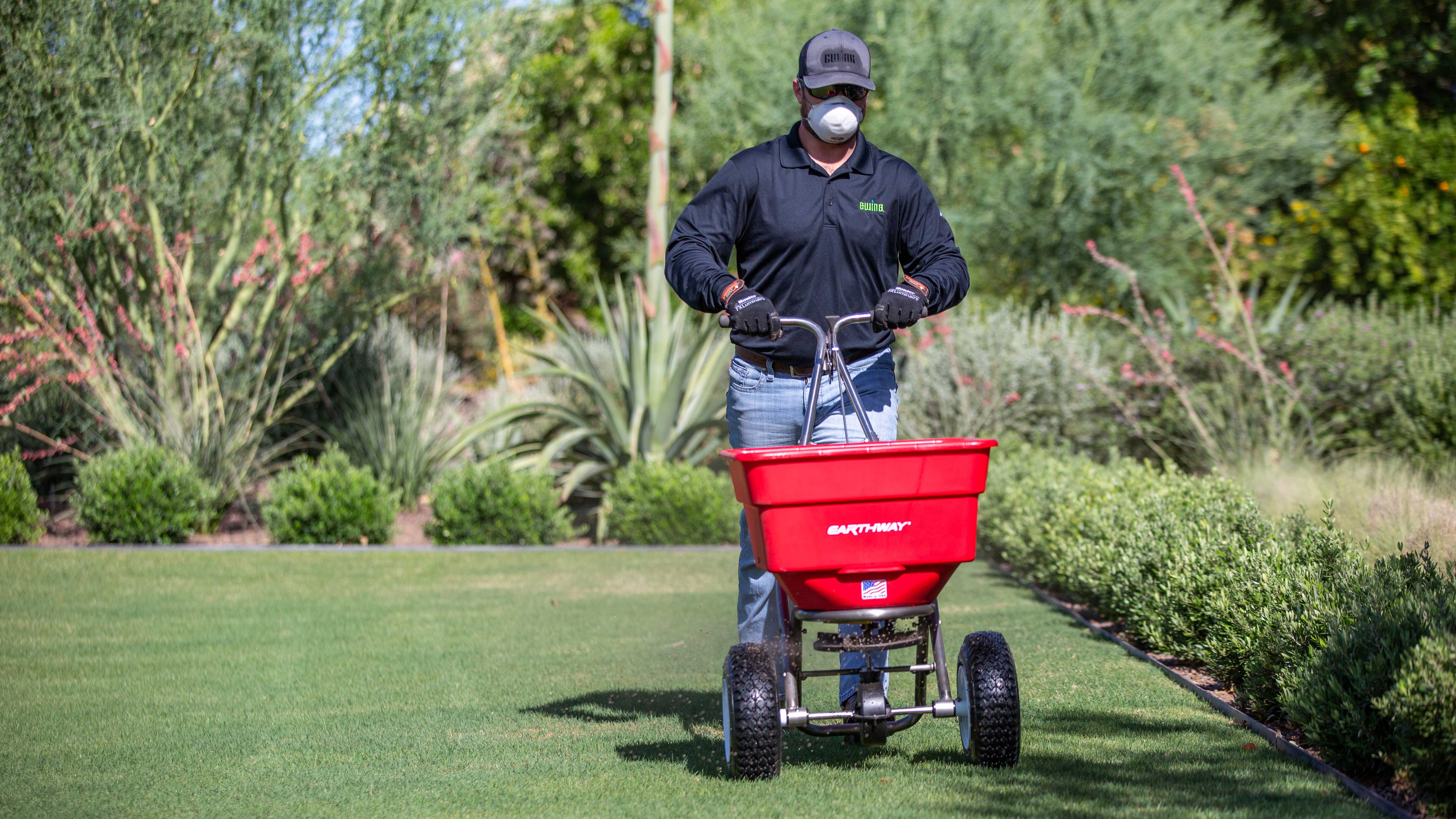When shopping for fertilizers, there are many things to consider. Often, price is the most important and can be a deciding factor without looking into it deeper.
The price per bag is not always a reliable indicator of the actual cost. A little lesson in fertilizer math will help determine the actual economic impact of your fertilizer choice. This won’t be painful. I promise no long division.
Mathematics for Proper Fertilizer Costing
There are many components to take into account when selecting granular fertilizers for the year. Price, along with availability, tend to rule these selections. Often, the cost per bag is used to make these decisions, when in truth the cost per 1,000 square feet should be weighed.
What do I mean by that? Let’s take a look at the label for EMPRO 24-0-8. As you recall, the three numbers or fertilizer analysis (grade) indicates how much of each macronutrient—nitrogen (N), phosphorus (P) and potassium (K)—are contained in the bag by percentage and in that order. In other words, 24% of this bag is nitrogen by weight and so on. For a quick tutorial, watch How to Calculate Fertilizer Application Rates on Ewing’s YouTube channel.
Using the analysis and the weight of the bag, you can easily calculate the coverage of the bag, or how far it will go. Most often, fertilizers are applied at a rate to deliver a certain amount of nutrient per square area.
Typically, the target is to apply 1 pound of nitrogen per 1,000 square feet. If this is the case, and 1 pound of N is the rate to achieve, the calculation is not complex. There are two methods you can use.
The first simply uses the percentage of nitrogen in the bag, which you will divide by 2 (24/2 = 12) and that will give you the coverage of the bag. In this case, 1 bag of 24-0-8 will cover 12,000 square feet when applied at the rate of 1 pound of nitrogen per 1,000 square feet. Simple, right?
The actual work looks more like this: Pounds of nutrient desired/nutrient as a decimal = pounds of fertilizer per 1,000 square feet, or 1.0/.24 = 4.17 pounds of fertilizer.
Most bags of granular fertilizer contain 50 pounds and when divided by the above rate of 4.17 pounds, that will give you the same calculation of 12,000, or the coverage of the bag.
If you take the rate of 4.17 and multiply it by 43.56 (square footage of an acre based on thousands) you will get the total pounds of fertilizer needed to treat an acre. 4.17*43.56 = 182, and divide by 50 (pounds per bag) adds up to roughly 3.6 bags per acre.
What about rates other than 1 pound of nitrogen per 1,000 square feet? Easy! Let’s say you want to apply three-quarters of a pound of N with the same product:
- 0.75/.24 = 3.125 pounds per 1,000 square feet
- 3.125*43.56 = 136 pounds per acre, or 2.7 bags per acre.
These calculations may initially look somewhat complex, but after performing them a couple of times they will become second nature. These calculations also become critical when determining cost to the applicator.
Let’s look at two EMPRO products available at EwingOutdoorSupply.com to see which one is the more economical option if each is applied at the rate of 1 pound of nitrogen per 1,000 square feet.
EMPRO 32-0-0 30% UFLEXX $39.34 per bag 
- 39.35/50 = $0.79 per pound of fertilizer
- 1.0/.32 = 3.125 pounds per 1,000 square feet
- 3.125 pounds*0.79 = $2.47 per 1,000 square feet
EMPRO 24-0-8 50%XCU 6 Fe $33.41 per bag
- 33.41/50 = $0.67 per pound of fertilizer
- 1.0/.24 = 4.16 pounds of fertilizer per 1,000 square feet
- 4.17*0.67 = $2.79 per 1,000 square feet

The take-home message here is while the bag pricing of the 24-0-8 appears to be the cheaper option, when you do the math, the 32-0-0 ends up being the more economical product to use. Taking the time to calculate the applied price versus the bag price can make a big difference when larger areas are treated.
The difference in cost to the customer ends up being $13.94 per acre, which really adds up on jobs over several acres.
Lean on Us for Help with Fertilizers and More
Contact myself or Pat Gross, Ewing’s Tech Team, for more information on fertilizers and other turf questions. Email me at klewis@ewingos.com or call/text 480-669-8791. Email Pat at pgross@ewingos.com or call/text 714-321-6101. We’re happy to help.
You also can find helpful videos on Ewing’s YouTube channel, including How to Read a Fertilizer Label, Avoiding Fertilizer Burn—Know Your Nitrogen and How to Calibrate a Broadcast Spreader.




